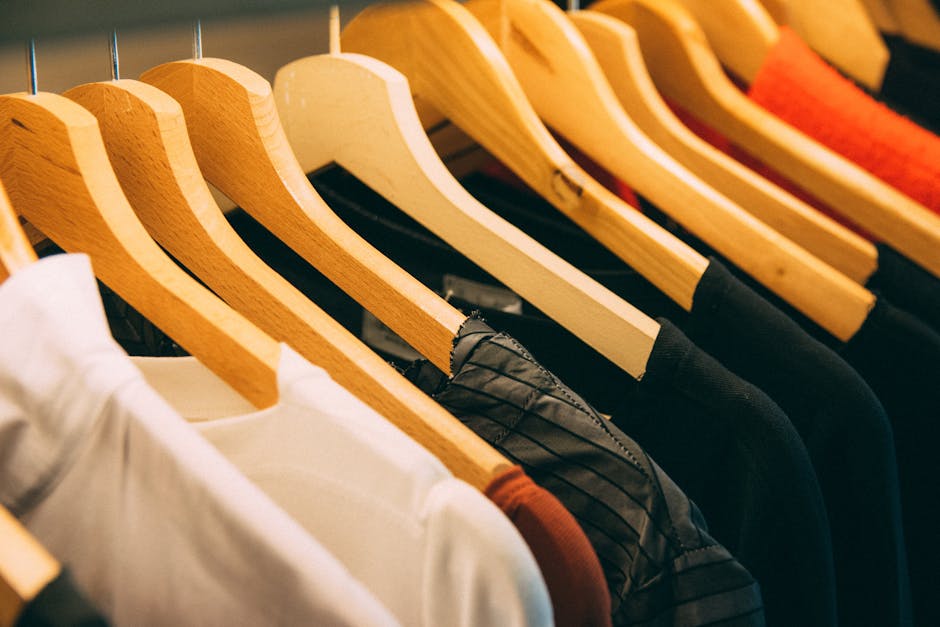How to Create a Minimalist Wardrobe
Welcome to the world of minimalism, where less is more, and simplicity reigns supreme. In a society bombarded with fast fashion trends and overflowing closets, the concept of a minimalist wardrobe offers a refreshing approach to style and self-expression. But how exactly do you create a minimalist wardrobe? What does it entail, and why has it become increasingly popular in recent years? Join us on a journey to explore the nuances of minimalist fashion and learn how you can curate a wardrobe that is not only stylish but also sustainable and clutter-free.
The Philosophy of Minimalism

At its core, minimalism is a lifestyle that focuses on simplicity, functionality, and intentionality. It encourages individuals to declutter their lives, both physically and mentally, by getting rid of excess and unnecessary possessions. When applied to fashion, minimalist principles emphasize quality over quantity, timeless pieces over fleeting trends, and a curated selection of essential items that reflect your personal style. By embracing minimalism in your wardrobe, you can streamline your morning routine, reduce decision fatigue, and make a positive impact on the environment by consuming less.
Minimalist fashion is characterized by clean lines, neutral colors, and versatile pieces that can be mixed and matched effortlessly. Think classic white button-down shirts, tailored black trousers, simple shift dresses, and well-fitted blazers. These timeless staples form the foundation of a minimalist wardrobe, allowing you to create a variety of chic outfits without the need for excess. By investing in high-quality basics that are durable and well-made, you can build a versatile wardrobe that stands the test of time.
Building a Capsule Wardrobe

One of the key concepts in minimalist fashion is the capsule wardrobe, a curated collection of essential pieces that can be mixed and matched to create a variety of outfits. The idea is to streamline your closet to include only items that you love and wear regularly, eliminating the clutter of unworn clothes and impulse purchases. A typical capsule wardrobe consists of around 30-40 items, including tops, bottoms, dresses, outerwear, and shoes, tailored to your lifestyle and personal style.
When creating a capsule wardrobe, start by assessing your current wardrobe and decluttering items that no longer serve you. Donate or sell clothes that no longer fit or spark joy, and keep only the pieces that you truly love and wear frequently. Make a list of essential items that you need to complete your capsule wardrobe, such as a white t-shirt, a pair of jeans, a black blazer, and comfortable flats. Focus on quality over quantity, investing in well-made pieces that will last for years to come.
When selecting items for your capsule wardrobe, consider your personal style, lifestyle, and color preferences. Choose a color palette that is cohesive and versatile, such as black, white, grey, and navy, with a few accent colors to add interest. Opt for classic silhouettes that flatter your body shape and can be styled in multiple ways. By carefully curating your capsule wardrobe, you can simplify your daily dressing routine and create a cohesive and stylish wardrobe that reflects your unique aesthetic.
Sustainable Fashion and Ethical Consumption

One of the driving forces behind the rise of minimalist fashion is the growing awareness of the environmental and social impact of fast fashion. The fashion industry is one of the largest polluters in the world, generating vast amounts of waste and consuming valuable resources in the production of clothing. By embracing minimalism and building a curated wardrobe of timeless pieces, you can reduce your carbon footprint and support sustainable and ethical fashion practices.
When shopping for new additions to your minimalist wardrobe, prioritize brands that are committed to sustainability, transparency, and ethical production practices. Look for certifications such as Fair Trade, GOTS (Global Organic Textile Standard), and B Corp that ensure that workers are paid fair wages, materials are sourced responsibly, and the environment is protected. Consider investing in well-made pieces that are designed to last, rather than cheaply made fast fashion items that contribute to the cycle of overconsumption and waste.
Another key aspect of sustainable fashion is the concept of circularity, which aims to keep clothing in use for as long as possible through repair, resale, and recycling. By extending the lifespan of your clothes and supporting secondhand and vintage shopping, you can reduce the demand for new clothing and minimize the environmental impact of your wardrobe. Embrace the slow fashion movement by investing in quality pieces that you love and will wear for years to come, rather than chasing fleeting trends that end up in landfill.
Practical Tips for Maintaining a Minimalist Wardrobe

Creating a minimalist wardrobe is just the first step; maintaining it requires discipline, organization, and a mindful approach to shopping and styling. Here are some practical tips to help you stay true to your minimalist principles and avoid falling back into old habits of overconsumption:
1. Quality Over Quantity
When adding new pieces to your wardrobe, prioritize quality over quantity. Invest in well-made items that are durable, timeless, and versatile, rather than buying cheaply made fast fashion pieces that will fall apart after a few wears. Consider the cost per wear and the long-term value of each item before making a purchase.
2. Mindful Shopping
Before buying something new, ask yourself if it fills a gap in your wardrobe, if you truly love it, and if it aligns with your personal style. Avoid impulse purchases and trendy items that will quickly go out of style. Practice mindful shopping by researching brands, materials, and production processes to make informed decisions.
3. Seasonal Edits
Regularly review and edit your wardrobe to ensure that it remains cohesive, functional, and clutter-free. At the beginning of each season, take stock of your clothes, shoes, and accessories, and set aside items that no longer fit or suit your style. Donate or sell these pieces to make room for new additions that align with your minimalist aesthetic.
4. Mix and Match
Get creative with your outfits by mixing and matching different pieces in your wardrobe to create new looks. Experiment with layering, accessories, and styling techniques to breathe new life into old favorites and discover fresh combinations. By maximizing the versatility of your clothes, you can make the most of your minimalist wardrobe.
5. Care and Maintenance
Extend the lifespan of your clothes by taking good care of them through proper storage, cleaning, and maintenance. Follow care instructions on garment labels, mend any rips or tears promptly, and store clothes in a way that preserves their shape and quality. By treating your clothes with care, you can enjoy them for years to come and reduce the need for frequent replacements.
Common Misconceptions about Minimalist Fashion
Despite its growing popularity, minimalist fashion is often misunderstood and misrepresented in the media and popular culture. Here are some common misconceptions about minimalist fashion and the truth behind them:
1. Minimalism is Boring
One of the biggest misconceptions about minimalist fashion is that it is dull, lifeless, and lacking in personality. In reality, minimalist style is all about self-expression, creativity, and individuality. By focusing on quality, fit, and details, you can create a wardrobe that is sophisticated, elegant, and uniquely yours. Minimalism is not about sacrificing style for simplicity but about elevating your personal aesthetic through thoughtful curation and refined taste.
2. Minimalism is Expensive
Another common myth about minimalist fashion is that it is prohibitively expensive and exclusive. While quality pieces may come with a higher price tag upfront, they often offer better value in the long run due to their durability and timelessness. Minimalism is about investing in pieces that you love and will wear for years to come, rather than chasing trends and accumulating fast fashion items that lose their appeal quickly. By adopting a minimalist approach to shopping, you can save money in the long term and build a wardrobe that reflects your style and values.
3. Minimalism is Only for Certain Body Types
Minimalist fashion is often associated with a particular aesthetic that favors clean lines, simple silhouettes, and monochromatic colors. However, minimalism is not limited to a specific body type, age, or gender. Anyone can embrace minimalist style by curating a wardrobe that suits their individual preferences and lifestyle. The key is to focus on quality, fit, and versatility, rather than following rigid rules or trends. Minimalism is about celebrating your unique style and expressing yourself authentically through your clothes.
Conclusion
To wrap things up, creating a minimalist wardrobe is not just about decluttering your closet; it’s about embracing a lifestyle of simplicity, intentionality, and sustainability. By curating a capsule wardrobe of essential pieces that reflect your personal style and values, you can streamline your daily dressing routine, reduce decision fatigue, and make a positive impact on the environment. Whether you’re new to minimalism or a seasoned pro, there’s never been a better time to embrace a more mindful approach to fashion and consumption.
Remember, minimalism is not about perfection or deprivation; it’s about making conscious choices that align with your values and priorities. By building a minimalist wardrobe that brings you joy, confidence, and comfort, you can create a style that is uniquely yours and stands the test of time. So, are you ready to simplify your wardrobe, elevate your style, and embrace the beauty of less? The journey to a minimalist wardrobe starts with a single step are you ready to take it?




